KSEEB Class 8 SSLC Biology Chapter 2 Reproduction In Plants Notes
Plants are living things and they exhibit some basic characteristics that are important for their survival and growth. Reproduction is one of the characteristic features of plants by which they reproduce so that their species survive. Thus, reproduction can be defined as the process of living beings producing young ones of their own kind.
Types Of Reproduction
There are two basic modes of reproduction in plants—Asexual (vegetative) reproduction and sexual reproduction.
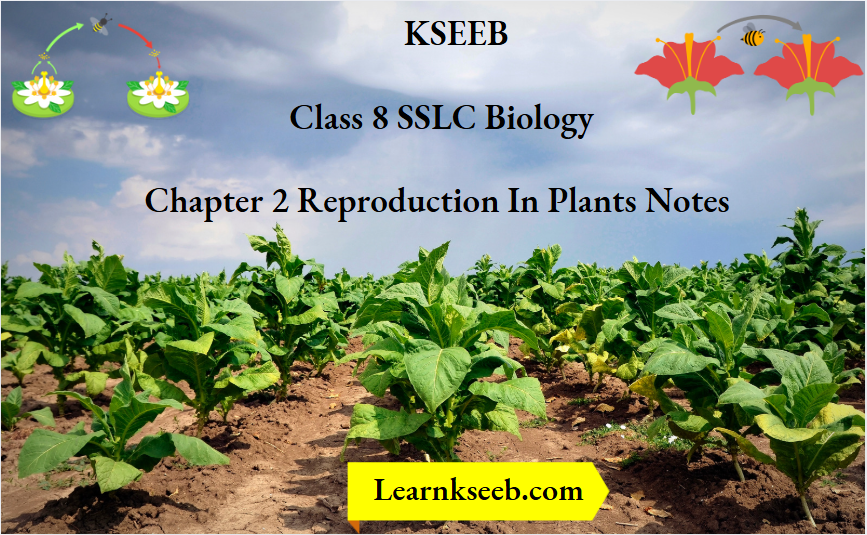
Asexual Reproduction
This method of reproduction involves a single parent which gives rise to the new individual. The offspring produced by this method are the exact copies of their parent. Amoeba, some lower organisms such as Hydra and veal reproduce by asexual reproduction. In plants, asexual reproduction takes place by the following methods:
Binary Fission
Small and lower organisms such as bacteria, Paramecium and blue-green algae reproduce through the method of binary fission. Here, the word ‘binary’ means ‘two’ and fission’ means ‘splitting’. It is a common method of reproduction in bacteria. In this method, the nucleus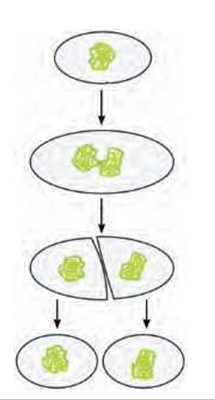
first splits into two and thereby, leads to the splitting up of the whole cell which finally forms Iwo identical twin cells, called the daughter cells.
Each daughter cell grows into adult individual. In algae such as Chlamydomonas, another type of fission process called multiple fission is seen as method of reproduction during unfavourable conditions. Chlamydomonas develops a protective covering when the conditions aren’t favourable. This protective covering is called cyst.
SSLC Class 8 Biology Reproduction In Plants Solutions
The cell divides again and again inside the cyst to produce many daughter cells. When the favourable conditions return, the daughter cells are released from the cyst. Each daughter cell grows into a new organism.
Budding
Reproduction by the method of budding is commonly seen in fungus, for example yeast.
In this method, a small bud-like outgrowth is seen in the parent body. This bud grows, increases in size and eventually gets detached from the parent. During the growing phase of the bud, the nucleus within the parent cell divides into two. One part moves into the bud and as a result, the detached bud is capable of growing into an independent plant
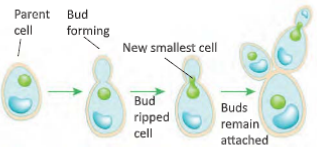
Fragmentation
In this method of asexual reproduction, the body of an organism breaks up into two or more fragments. Each part or fragment then grows into a new plant. The most common example of this kind of reproduction is seen in filamentous algae Spirogyra.
Spore Formation
Spore formation is an asexual method of reproduction in plants. The formation of spores is seen on the underside of the leaves of some ornamental plants. These spores can be compared to the seeds formed in higher plants.
In the spore formation method of reproduction, the parent plant produces hundreds of tiny spores in ‘spore cases’. When the spore case of the plant bursts, then the spores spread into the air. As the spores are very light, they keep floating in air and are carried over large distances by air.
Each spore is covered by a hard, protective coat to withstand unfavourable conditions such as high temperature and low humidity. They can survive for a long period of time.
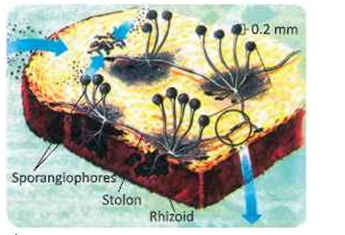
Under suitable conditions, spores are capable of producing new plants. Plants such as ferns, fungi and mosses reproduce by means of spores. Fungus also produces spores.
KSEEB Notes On Reproduction In Plants For Class 8
Vegetative Propagation
Vegetative propagation is an asexual method of reproduction in plants. It is also called vegetative propagation because the production of new plants lakes place through the vegetative parts of the plants. Vegetative propagation usually involves the growth and development of one (or more) buds on the old part of the plant to produce a new plant. These buds are in the dormant state (inactive state) in the old part of the plant.
When provided with suitable conditions (like food, moisture, warmth, etc.), these buds grow to form new plants. Some of the plants which are usually reproduced by the method of vegetative propagation are: rose, potato, ginger, turmeric, sweet potato, dahlia, mini, sugar cane, banana, bryophyllum, strawberry, gladiolus, cactus and grapes. In vegetative propagation, plants reproduce from the vegetative parts such as roots, stems and leaves. Let us understand these methods one by one.
Reproduction by Stems
The vegetative propagation in plants can be done using aerial stem, sub-aerial stem and underground stem.
By Aerial Stems
The stems (or branches) of plants normally bear buds in the ‘axils* which can be used in vegetative propagation to produce new plants. Reproduction by aerial New plants can be stem (cutting method)
obtained from the stem (or branch) of an existing plant by the method of cuttings’. A small part of stem (or branch) of a plant which is removed by making a cut with a sharp knife, is called a cutting.
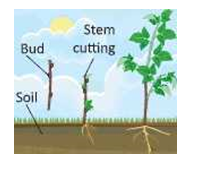 While making a cutting, care should be taken to see that there arc some buds on it. The lower end of stem cutting is buried in the moist soil. The upper part of cutting having bud on it is kept above the ground. The cutting planted in soil is watered every day The new plant grows in some time. Please note that a stem cutting or a branch cutting means the same thing. We will now describe how new plants can be grown from cuttings.
While making a cutting, care should be taken to see that there arc some buds on it. The lower end of stem cutting is buried in the moist soil. The upper part of cutting having bud on it is kept above the ground. The cutting planted in soil is watered every day The new plant grows in some time. Please note that a stem cutting or a branch cutting means the same thing. We will now describe how new plants can be grown from cuttings.
By Sub-Aerial Stems
In some plants, a slender branch coming out from the base of the stem grows and bends to touch the soil. It develops roots and buds at the point of contact with the soil. Some examples of plants that display such stems include strawberry, jasmine and mint. These plants are also called runners and stolons.
By Underground Stems
Most of the plants around us have normal stems which grow above the ground. Some of the plants, however, have modified stems which are short Fig. 2.6 Runners and and thick, and grow stolons in strawberry below the ground (or underground). Rhizome, corm, bulbs and tubers are the various kinds of underground stems. Rhizome: Rhizome is an underground stem that bears roots and shoots at the nodes. The roots and shoots develop into a new plant. Some examples of plants where rhizome is seen are grasses, canna, ginger and turmeric.
Corm: Corm is an underground stem that grows in clusters and is usually round in shape. Roots develop from the base and sides of the corm.

The examples of plants where corm is seen are gladiolus and saffron.
Bulbs: Bulb is an underground stem having a bud and membranous leaves. The membranous leaves are known as scales. The scales store food materials. The buds can grow into a new plant. Bulbs are used to grow the plants such as garlic, tulips and onion.
Tubers: Tubers are stems that grow underground and are swollen and fleshy. They serve for food storage and reproduction. Tubers develop eyes which contain buds that are capable of growing into new plants. Stored food within the tubers is used up by the buds during the process of growing into a new plant. Potato is an example of a tuber.

Aim: To observe vegetative reproduction through rhi2ome.
Procedure: Take a small piece of ginger and place in a pot conta ning soil. Cover it entirely with soil. Water it every day. After a few days, you will observe that buds are growing into new aerial shoots to form a new plant. Look at the roots of the plant now.
Observation: In ginger, buds grow into new plants and this type of stem modification is called rhizome.
Activity 1
Aim: To observe vegetative reproduction in onion through onion bulbs.
Procedure:
Take a healthy onion bulb and place it in a pot containing soil. Cover the onion bulb with soil. Water it every day. After a few days, you will observe new leaves growing. Gradually, the bud will grow into a new plant.
Observation:
Onion plants grow with the help of onion bulbs through the method of vegetative propagation.
Aim: To observe vegetative reproduction in potato.
Procedure: Take a small part of the potato with an eye. Place in a pot containing soil and cover it entirely with soil. Keep the pot in a shady place and water it every day for few days. After some days, you will observe that new leaves are growing.
Observation: The eye or the tubers of the potato grow into a new plant through vegetative propagation.
Detailed Notes On Reproduction In Plants KSEEB Class 8
Reproduction by Roots
The roots of plants normally do not bear buds. There are, however, some plants which have modified, thickened roots which bear buds. For example, sweet potato plant has modified roots thickened with stored food which are called root tubers. The root tubers of sweet potato have buds (eyes) Root form new plant on them in sweet potato which can grow to produce new sweet potato plants. Thus, sweet potato plants are reproduced by the method of vegetative propagation through their root tubers. 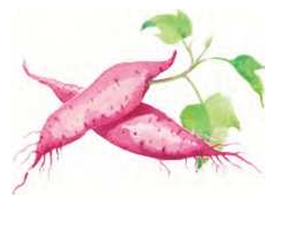 Another plant called Dahlia also has root tubers. The root tubers of Dahlia have buds in them which can grow to produce new Dahlia plants. Thus, Dahlia plants are reproduced by the method of vegetative propagation through their root tubers. From the above discussion we conclude that the roots of some plants like sweet potato and dahlia can be used to produce new plants.
Another plant called Dahlia also has root tubers. The root tubers of Dahlia have buds in them which can grow to produce new Dahlia plants. Thus, Dahlia plants are reproduced by the method of vegetative propagation through their root tubers. From the above discussion we conclude that the roots of some plants like sweet potato and dahlia can be used to produce new plants.
Reproduction by Leaves
Some plants reproduce themselves from leaves. The leaves of some plants develop buds on them. Such leaves having buds can be used as structures of vegetative reproduction in plants. One example of a plant which can reproduce from its leaves is Bryophyllum {Bryophyllum is also called sprout leaf plant). The leaves of Bryophyllum plant develop some buds in its margins (or edges). Wien a . . c e Adventitious Buds mature leaf ot the Bryophyllum plant falls on the ground, then each bud can grow into a new plant. 
Sometimes, even before a leaf drops off from „ Leaf of Bryophyllum a Bryophyllum plant, we can see new plantlets already growing on it. Thus, the leaves of Bryophyllum plant can produce new plants. Another plant called begonia also reproduces by vegetative propagation through its leaves. The begonia plant has buds on its leaves which can grow into new plants when the leaves fall on the ground. From this discussion we conclude that the two plants, Bryophyllum and begonia, can be reproduced from their leaves.
Aim: To grow Bryophyllum by vegetative reproduction.
Procedure: Take a full grown leaf of Bryophyllum having buds growing out from its margin. Cut the leaf in such a way so that each contains a adventitious bud. Put these pieces in a flower pot so as bud projects out from surface of soil and water it. Observe for 10-12 days.
Observation: The adventitious buds of Bryophyllum grow into a new plant when conditions suitable for growth are provided.
KSEEB SSLC Class 8 Biology Chapter 2 Summary
Artificial Vegetative Propagation
Several artificial methods have been developed to promote vegetative propagation by horticulturists. These methods are also called vegetative propagation and it includes cutting, layering, grafting and tissue culture. Let us discuss each of them in detail.
Cutting: The method of cutting the stem into small pieces and planting the cut end in soil is known as cutting. The piece of Cutting method for stem eventually rose P|ant bears roots and new leaves and grows into an adult plant. Examples of plants where the artificial vegetative propagation is carried out by means of cutting are money plant, rose and China rose. Grafting: This method is used to obtain a plant by combining two different plants. Thus, it produces a variety with the features of two different plants.
In this method, a stem cutting called scion (without roots) from one plant is attached and tied to the other stem cutting part called stock (with roots). This process is similar to cutting except the cut part is attached to the stem instead of planting in the soil. When a portion of a cut stem is grafted onto another stem, the cut stem is fixed properly and covered with tape, so that it becomes part of the host plant and continues to grow. The grafted stem is usually added for more flowers and fruits as good qualities of both the plant are combined in die host plant. Grafting is most commonly seen in rose plant where higher yield of rose flowers is achieved.
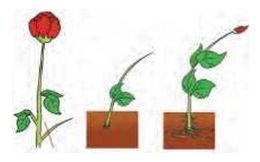
Layering: In this method, a portion of the aerial stem is made to grow roots while it is still attached to the parent plant and later is detached from it, so that it grows into an independent plant. In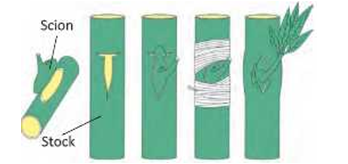
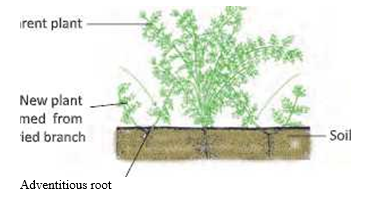
this method, a part of the lower branch of the plant is bent down, so that it touches the soil and a layer of bark is removed from the place where it touches the soil. The part of the lower branch Lhal is touching the soil, is then covered with soil and a small object such as a small piece of wood is placed over it lightly so that the branch remains in the soil. After a few days, roots begin to grow from this branch and then, the branch is cut off from the parent plant. It slowly grows to become an independent plant.
The advantage of this method is that the branch continues to receive nutrition from the parent plant till the time it is able to sustain itself independently. Layering is carried out in plants such as climbing rose, mint and raspberries.
Tissue Culture
Tissue culture involves the production or growth of plants in synthetic medium under artificial conditions in laboratory. Here, a kind of plant of an existing plant in a test tube. The medium used to grow plants in a test tube is rich in nutrients and suitable for the growth of the specific plant. An unorganized mass of cell known as callus develops from it.
The callus is put in a hormone containing medium which induce cell differentiation and formation of plantlets. The plantlets develop into an independent plant when transferred to the soil. Some examples of plants that arc cultivated using tissue culture technique are orchids, asparagus, chrysanthemum, etc.
Advantages of Vegetative Propagation
- It is a faster method to produce a new plant.
- The offspring will be exactly the same as the plant.
- The plants produced by vegetative propagation bear flowers and fruits earlier than the new plants produced by seeds.
- It is a very useful method for production of seedless plants such as grapes and banana.
Disadvantages Of Vegetative Propagation
- As the plants developed through vegetative propagation are identical, there is a chance that in case if there is a disease in a farm, then it will affect all plants simultaneously.
- It can result in the destruction of entire crop. As there is no dispersal of plants, there are chances of overcrowding.
Sexual Reproduction In Plants
The plants that have flowers are called flowering plants. Most of the flowering plants reproduce by sexual reproduction method. In this method, there is an involvement of male and female organs or gametes. Let us understand the structure and various parts of a flower.
Flower (the reproductive part)
Flowers contain the sexual reproductive organs of a plant. In most of the plants, the same flower contains the male organ as well as the female organ. The function of a flower is to make male and female gametes, and to ensure that fertilisation will take place to make seeds for growing new plants. In other words, flowers perform the function of reproduction in plants by producing seeds of the plant. Thus, flowers are for sexual reproduction in plants.
Free KSEEB Notes On Class 8 Reproduction In Plants
Floral Parts of a Flower
A typical flower has four major parts arranged in rings or whorls—calyx, corolla, androecium and gynoecium. The whorls are arranged on a fleshy base called receptacle.
 Each of these parts has a specific role to play. Some flowers may or may not contain one or more of the parts, however the same function may be done by some other part of the plant.
Each of these parts has a specific role to play. Some flowers may or may not contain one or more of the parts, however the same function may be done by some other part of the plant.
Calyx
The green, leaf-like parts in the outermost circle of a flower are called sepals. All the sepals taken together are called ‘calyx*. In some flowers, the sepals may be differently coloured. The sepals cover and protect the inner parts of the flower in the bud stage.
Corolla
This is the second whorl of the flower and is made of brightly coloured petals. The petals lie inside the sepals. Ail the petals taken together are called ‘corolla’. The petals are usually scented. The function of petals is to attract insects (for pollination) and to protect the reproductive organs which are at the centre of the flower.
Androecium
This is the male reproductive part of the flower and is made up of stamens. A stamen is made up of a long slender filament and a broad anther at the lip. This anther contains several pollen grains that are in a form of a yellowish powdery substance. Pollen grains contain the male gametes (nucleus).
Gynoecium
This is the female reproductive part of the flower and is the innermost whorl. It consists of pistils or carpels. Each pistil is made up of an enlarged ovary at the base, a long slender style and a broad stigma at the tip. Stigma, style and ovary are collectively termed as carpel. The stigma is sticky in nature which is basically to attach the pollens dispersed in air.
The style is a tube that leads from the stigma to the ovary and helps in passage of the pollen to the ovary. The ovules contain the female gametes that develop into seeds after fertilization. Ovary is the swollen part of the style. The ovary consists of ovules, which are the female gametes.
Pollination
For the male gamete to be able to combine with the female gamete, it is necessary that first the pollen grains from the anther of stamen of a flower should be carried to the stigma of pistil The transfer of pollen grains from the anther of a stamen to the stigma of a pistil is called pollination. Pollination can occur in two ways: self-pollination and cross- pollination.
Self-pollination
‘The transfer of the pollen grains from the stamens produced in one flower to the stigma of the same flower or the stigma of another flower blooming on the same plant is known as self-pollination.
Cross-pollination
When the pollen grains from the anther of a flower on one plant are transferred to the stigma of a flower on another similar plant, it is called cross- pollination. There are several agents of pollination such as insects, wind and water.
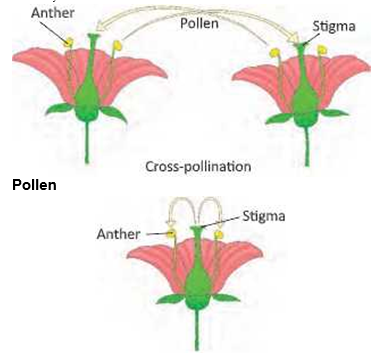
Pollination by Insects
When an insect sits on the flower of a plant for sucking nectar, then the pollen grains from the anther of this flower stick to its body. And when this insect now sits on another flower to suck nectar, then the pollen grains sticking to its body are transferred to the stigma of this second flower. In this way, the insects transfer pollen grains from flower to flower and curry out pollination. Insects, such as, beetles and butterflies visit flowers for nectar and in the process helps in the pollination. Characteristics of insect pollinated flowers:
- The insect pollinated flowers have large, bright coloured, petals.
- These flowers are scented so as to attract insects for pollination.
- These flowers possess nectar, which is used as a food by insects.
- Also these flowers produce sticky pollens which get stuck on the body of insects and are carried by them to other flowers.
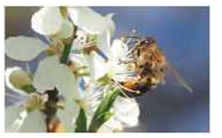
Pollination by Wind
The blowing wind carries pollen grains from one flower to other flowers and helps in pollination. Wind pollinated flowers do not have large, brightly coloured and scented petals or nectar because they do not have to attract insects. The wind pollinated flowers have anthers that
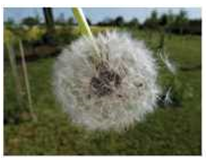
hang outside the flowers to catch the wind. They produce large amount of light, small pollen grains which can blow in the wind. The wind-pollinated flowers also have spreading and feathery stigmas to catch the airborne pollen grains. Some of the wind-pollinated flowers are in plants such as grass, maize, rice, sugar cane, bamboo and palms. Characteristics of wind pollinated flowers:
- They have long anthers protruding outside the flower so that pollens move to stigma of other plants easily with moving air.
- Pollens produced by wind pollinated plants are lighter so that they can be carried away easily.
- These plants produce large quantities of pollens so as to increase the probability of fertilisation.
Explanation Of Reproduction In Plants KSEEB Class 8
Pollination by Water
Plants that are pollinated by water are usually aquatic. However, all aquatic plants arc not necessarily pollinated by water. Some plants such as lotus have flowers that bloom outside water and these are then pollinated by insects. Water pollinated plants include vallisneria and pond weeds. The pollens float in water and when they come in contact with the stigma of the female flower, they get attached and undergo fertilisation.
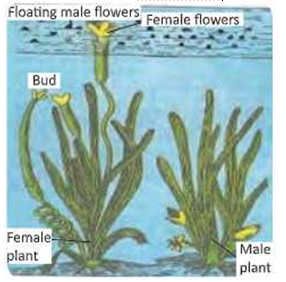
Characteristics of water pollinated flowers:
- In water pollinated plants, male and female flowers are borne on separate plants.
- Pollen grains arc produced by these plants in large quantities.
- Flowers in these plants are lighter and smaller so that they can float on the surface of water.
Artificial Pollination
Artificial pollination is usually carried out to improve the variety of a particular plant. In this method, crops of desired characteristics, called parent crops, are selected. During this process, the gynoecium of the flower is kept covered with paper or polybag, so that pollination does not take place naturally. Once the stigma of the flower of one crop plant matures, carefully selected pollens from flowers of other crop plant are placed on these stigmas.
The seeds produced in this manner possess good characteristics of both plants and this new variety is known as hybrid. Several varieties of plants of fruits such as mango, and grains such as rice, maize and wheat are produced in this manner. The hybrid plant produced is of superior quality.
Fertilisation
After pollen reaches the stigma of another flower of the same species, it starts to grow by forming a pollen tube. This pollen lube has two male nuclei. It travels down the style and enters the ovules in ovary. In the ovary, pollen tube releases male cells which fuse with female cells to produce zygote. The process in which the male gamete present in pollen grain fuses (joins) with the female gamete present in ovule to form a new cell called zygote is called fertilisation.

The ovule that contains the fertilised egg eventually develops into a seed. The ovary enlarges and converts into the fruit that bears the seeds. The covering of the ovule alters and changes into the seed coat.
Keywords
- Whorl: A circular arrangement of petals and sepals around a point or axis in a flower Reproduction: The process of living beings producing young ones of their own kind
- Asexual reproduction: The formation of new plants from cells of an existing plant
- Sexual reproduction: The formation of new plants due to the fusion of male and female gametes
- Binary fission: Parent body divides into two halves to produce two daughter cells. It is a common method of reproduction in bacteria
- Callus: An unorganised mass of cell
- Fertilisation: The male nucleus fuses with the egg cell or female gamete present inside the ovule and zygote is formed
- Grafting: A stem cutting called scion (without roots) plant is attached and tied to the other stem cutting part called stock (with roots)
- Pollination: The transfer of the pollen grains of a flower to the stigma of the same flower is known as pollination
Summary
- Living beings need to reproduce, so that their species survives.
- Plants reproduce by means of asexual or sexual reproduction.
- Asexual reproduction does not involve fusion of male and female sex cells. In sexual reproduction, fusion of male and female cells takes place and both the parents are involved.
- There are various ways of vegetative propagation in plants. The lower plants follow the method of fission, budding, fragmentation and spore formation. The higher plants reproduce or multiply by using the parts such as roots, stems or leaves.
- Several artificial methods have been developed to promote vegetative propagation by horticulturists and these include cutting, layering, grafting and tissue culture.
- A typical flower consists of the stalk, calyx, corolla, androecium and gynoecium. Each of these parts has a specific role to play.
- Androecium is the male part of the flower. It consists of many threads-like structures called stamens which have a filament that bears an anther at the top.
- Gynoecium is the female part of flower. The main parts of gynoecium are stigma, style, ovule and ovary.
- Pollination is usually of two kinds—self-pollination and cross-pollination.
- There are several agents of pollination such as insects, wind and water.
- The male nucleus fuses with the egg cell or female gamete present inside the ovule and zygote is formed. This process of fusion is called fertilizaton.
